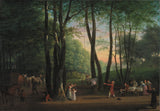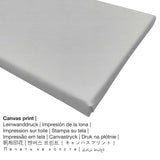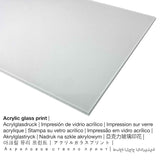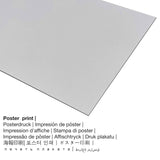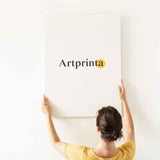Jens Juel, 1800 - Egwuregwu egwu egwu na Sorgenfri North nke Copenhagen - mbipụta nka mara mma.
Ụtụ gụnyere. Mbupu gbakọrọ na ndenye ọpụpụ.
What specifically does the Statens Museum for Kunst (National Gallery of Denmark) state about this 19th century work of art made by Jens Juel? (© - Statens Museum for Kunst (National Gallery of Denmark) - Statens Museum maka Kunst (National Gallery nke Denmark))
At the end of the 18th century a new pastime became popular among the citizens of Copenhagen: outings to the Dancing Glade at Sorgenfri Palace north of Copenhagen. Here, the crowds would picnic, relax, and while away time playing games. Juel captures one of these carefree events.
The central motif: The woman in the swing To the left a party is climbing out of their carriage while several other celebrants have already made themselves comfortable at one of the tables or in a clearing between the trees. The central motif is the woman in the swing, who introduces movement to the picture and brings the composition together. During the period immediately preceding this time, the Rococo, women in swings appeared in a great many paintings, always with a hint of eroticism as the skirts fluttered around their legs. Juel’s painting has no such erotic undertones.
A middle-class idyll The scene is a middle-class idyll where city dwellers take a rest from the frantic pace of their everyday lives. In this respect the painting points towards the next major period in Danish painting, the so-called Golden Age, where life was very much seen through the eyes of the industrious middle classes. As in several others of Juel’s pictures from around 1800, the landscape itself occupies a prominent position here.
Tebụl ihe osise
| Aha nka: | "The Dancing Glade at Sorgenfri North of Copenhagen" |
| nhazi ọkwa: | sere |
| Otu izugbe: | nkà nke oge a |
| Narị afọ nka: | 19th narị afọ |
| Afọ okike: | 1800 |
| Afọ nka: | ihe dị ka afọ 220 |
| Ụlọ ihe ngosi nka / ebe: | Statens Museum maka Kunst (National Gallery nke Denmark) |
| Ebe ngosi nka: | Copenhagen, Denmark |
| Ụlọ ihe ngosi nka URL: | Statens Museum maka Kunst (National Gallery nke Denmark) |
| Ụdị ikike nka: | ngalaba ọha |
| Site n'aka: | National Gallery nke Denmark |
Nchịkọta ihe nkiri
| Aha onye nka: | Jens Juel |
| Aha nka ndị ọzọ: | Jens Juel Königl. Dän. Portraitmahler und Prof. der Mahler=Academie zu Copenhagen, Juel Jens Jorgensen, J. Juel, Juel J., J. Jvel, Professor Juel, Jens Jul, Juul, Jens Jvel, Prof. Juel, Jens Juel, Professor Juul, Juel Jens Jørgensen, J. Jul, Jens Juul, Juel Jens, Jens Jorgensen Juel, Juel |
| Gender: | nwoke |
| Obodo onye nka: | Danish |
| Ọrụ: | onye na-ese ihe |
| Country: | Denmark |
| Nhazi nke onye nka: | omenkà nke oge a |
| Afọ ọnwụ: | 57 afọ |
| Amụrụ n'afọ: | 1745 |
| Nwuru: | 1802 |
| Obodo ọnwụ: | Copenhagen, Hovedstaden, Denmark |
Banyere akụkọ
| Bipụta ngwaahịa: | ọrụ mgbidi |
| Usoro mmeghari: | dijitalụ mmeputakwa |
| Usoro mmepụta: | UV kpọmkwem obibi |
| Mmalite nke ngwaahịa a: | Germany |
| Ụdị ngwaahịa: | a na-achọ |
| A na-atụ aro iji ngwaahịa eme ihe: | ime ụlọ, ịchọ mma mgbidi |
| Ntuziaka onyonyo: | usoro odida obodo |
| Oke akụkụ: | 1.4: 1 |
| Nkọwa nke oke onyonyo a: | ogologo bụ 40% ogologo karịa obosara |
| Nhọrọ akụrụngwa: | Mbipụta kwaaji, mbipụta enyo acrylic (nwere ezigbo mkpuchi iko), mbipụta akwụkwọ mmado (akwụkwọ kwaaji), mbipụta ọla (aluminium dibbond) |
| Mpempe akwa akwa (akwa akwa na etiti ihe ndọtị) nha: | 70x50cm - 28x20", 140x100cm - 55x39" |
| Mbipụta iko acrylic (nke nwere ezigbo mkpuchi iko): | 70x50cm - 28x20", 140x100cm - 55x39" |
| Mpempe akwụkwọ mmado (akwụkwọ kwaaji) nha dị iche iche: | 70x50cm - 28x20" |
| Mbipụta aluminom (aluminium dibond ihe) nha dị iche iche: | 70x50cm - 28x20", 140x100cm - 55x39" |
| Nhazi mbipụta nka: | adịghị |
Nye iwu ngwaahịa ị ga-achọ inwe
Anyị na-enye ụdị dị iche iche nha na ihe maka ngwaahịa ọ bụla. Anyị na-ahapụ gị ka ịhọrọ nha na akụrụngwa ọkacha mmasị gị n'etiti nhọrọ nhazi ngwaahịa ndị a:
- Mbipụta enyo acrylic: A glossy print on acrylic glass, which is sometimes referenced as a print on plexiglass, will convert your chosen original artwork into décor and makes a viable alternative option to dibond and canvas art prints. The work of art is being made thanks to the help of modern UV direct printing machines. The major advantage of a plexiglass fine art copy is that contrasts and also small color details will be more identifiable due to the fine tonal gradation. The acrylic glass protects your selected fine art print against sunlight and heat for decades.
- Mbipụta akwụkwọ mmado (ihe kwaaji): Our poster is a printed canvas with a slightly roughened surface texture. Please keep in mind, that depending on the size of the poster we add a white margin of approximately 2-6cm round about the work of art, which facilitates the framing with your custom frame.
- Aluminom dibond mbipụta (ọla): These are metal prints on aluminium dibond with an impressive depth effect - for a modern look and a non-reflective surface. For the Aluminium Dibond option, we print the favorite artwork onto the aluminium composite white-primed surface.
- Mbipụta kanvas: The UV printed canvas applied on a wood stretcher frame. A canvas has a typical impression of three dimensionality. How do I hang a canvas on the wall? A canvas print has the advantage of being low in weight, which implies that it is easy and straightforward to hang the Canvas print without extra wall-mounts. Because of thatcanvas prints are suited for all types of walls.
The over 220 years old work of art The Dancing Glade at Sorgenfri North of Copenhagen e sere ya Jens Juel. Besides, this work of art can be viewed in in the Statens Museum for Kunst (National Gallery of Denmark)'s art collection. This masterpiece, which belongs to the public domain is being provided, courtesy of National Gallery of Denmark.Creditline of the artwork: . The alignment of the digital reproduction is landscape and has a ratio of 1.4 : 1, which implies that ogologo bụ 40% ogologo karịa obosara.
Important information: We try all that we can in order to depict our products as accurately as possible and to illustrate them visually. Please keep in mind that the colors of the print products, as well as the print result may vary somehwat from the image on your monitor. Depending on your settings of your screen and the nature of the surface, not all colors are printed as exactly as the digital version. Because our fine art prints are printed and processed by hand, there may also be minor differences in the motif's size and exact position.
© echebe nwebiisinka | www.artprinta.com (Artprinta)

